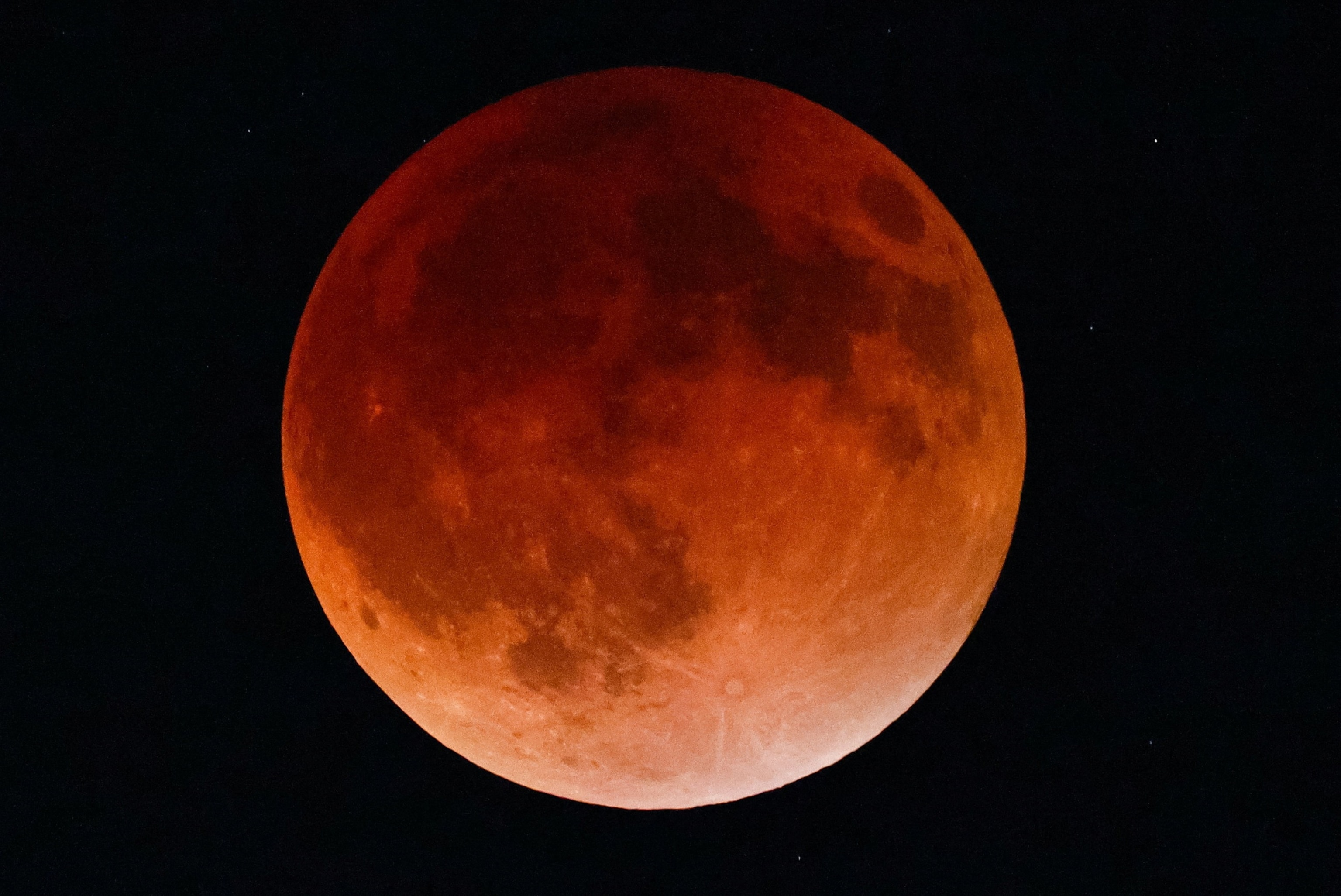Total Lunar Eclipse Visible Across Multiple Continents
A rare total lunar eclipse, known as a 'Blood Moon,' was visible across Asia, Africa, Europe, and Australia on the night of September 7–8, 2025, captivating millions with its deep red hue and unusually long duration.

A spectacular total lunar eclipse, often referred to as a 'Blood Moon,' unfolded on the night of September 7–8, 2025, enchanting skywatchers across Asia, Africa, Europe, and Australia. This celestial event, one of the longest total lunar eclipses in a decade, lasted 82 minutes in totality and was visible to billions of people, making it a significant astronomical occurrence.
The eclipse began as the Moon entered Earth's shadow, gradually taking on a deep red-orange color. This striking transformation occurs because sunlight passing through Earth's atmosphere is scattered, with shorter blue wavelengths filtered out and longer red wavelengths bending toward the Moon. The result is the dramatic 'Blood Moon' effect, a phenomenon explained by Rayleigh scattering, which also gives sunsets and sunrises their vivid colors.
Global Visibility and Timings
The eclipse was best observed from India, China, Japan, Southeast Asia, most of Africa, and Australia, with Eastern and Central Europe witnessing the event near moonrise. Major cities such as Mumbai, Cape Town, and Paris reported clear views of the eclipse during its peak. In contrast, most of North and South America missed the spectacle, though live streams allowed enthusiasts worldwide to participate virtually.
The timing of the eclipse varied by region. For example, totality occurred from 11:00 p.m. to 12:22 a.m. in Mumbai, while in London and Paris, the Moon rose already in eclipse, offering a brief but memorable view. The entire event spanned over five hours, providing ample opportunity for observation and photography.
Scientific Significance and Public Engagement
Unlike solar eclipses, which require protective eyewear, lunar eclipses are safe to observe with the naked eye. Astronomers and educators emphasized the importance of such events for public engagement with science, as the spectacle drew crowds to parks, observatories, and rooftops. The event also offered a unique opportunity for scientists to study Earth's atmosphere, as the color and brightness of the Moon during totality can reveal information about atmospheric conditions.
Adding to the rarity, satellites in orbit, such as NOAA's GOES-18 and GOES-19, captured both a solar and lunar eclipse within hours, highlighting the dynamic interplay of celestial bodies. The next total lunar eclipse visible in the Americas is expected in March, making this event a memorable highlight for skywatchers across the Eastern Hemisphere.